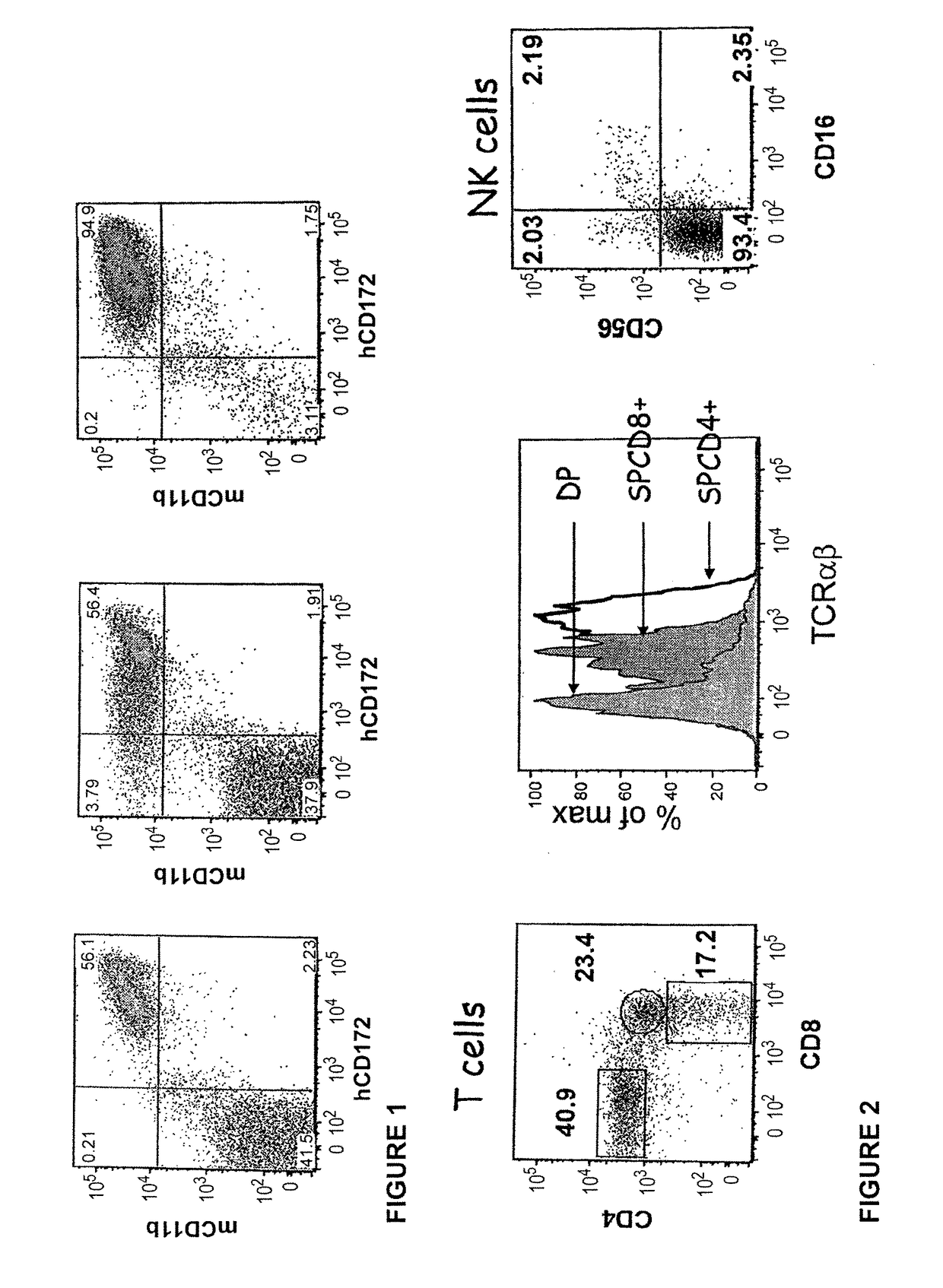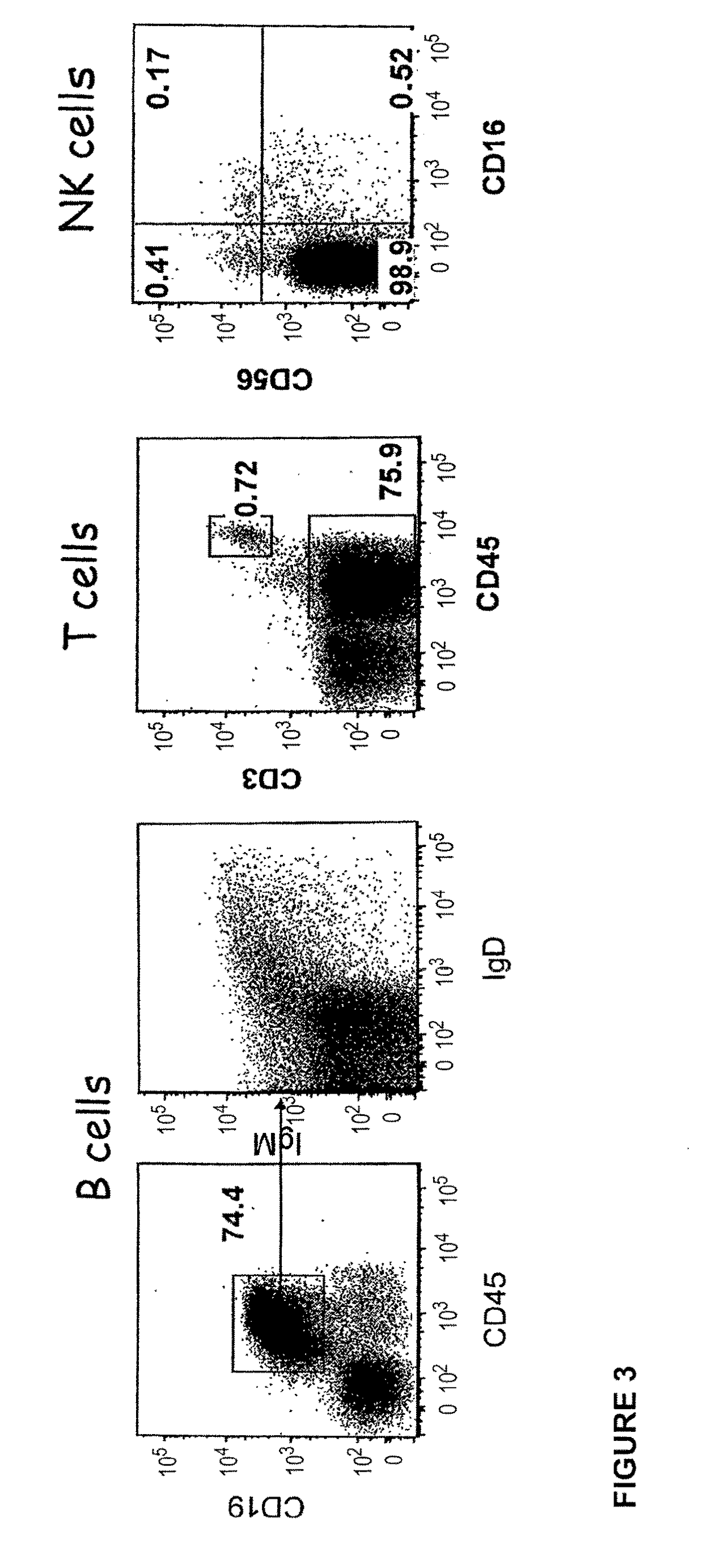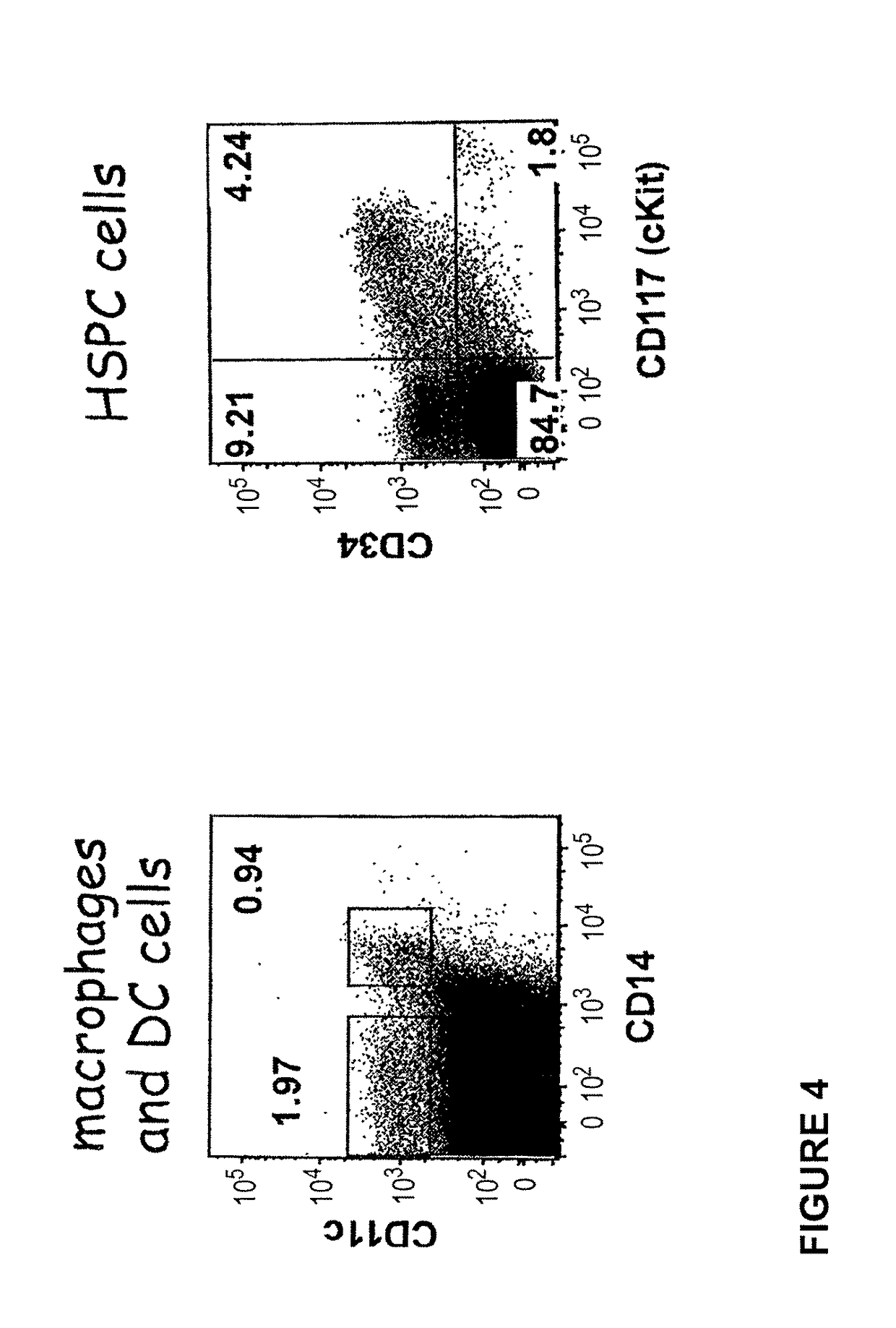Transgenic immunodeficient mouse expressing human SIRP-alpha
a technology of immunodeficiency and mouse, which is applied in the field of transgenic immunodeficiency mouse expressing human sirp-alpha, can solve the problems of limiting the engraftment of human progenitor cells, affecting the design, and difficult to inject the same day neuronal and hematopoietic precursors into the brain
- Summary
- Abstract
- Description
- Claims
- Application Information
AI Technical Summary
Benefits of technology
Problems solved by technology
Method used
Image
Examples
Embodiment Construction
Mouse Genetic Background
[0188]The CH1-2 mice derived from the crossing of 129 (Rag2− / −γc− / −, C5− / −) X FVB (HLA-DR1+, C5− / −) X B6 (β2 m− / −, I-Aβb− / −, HLA-A2±) laboratory inbred mouse strains as described in WO 2008 / 010099 and WO 2008 / 010100. More precisely, the Rag2− / −, γc− / − mice (129 background) were crossed with I-Aβb− / − (C57B1 / 6 background) and the F1 progeny were crossed successively with β2m− / − (C57B1 / 6 background), HLA-DR1 transgenic mice (DR1+, FVB background) and HLA-A2.1 transgenic mice. I-Aαb+ (essential for murine MHC class II− / − phenotype) and C5− / − progenies (both 129 and FVB strains are constitutively C5− / −) were selected from each crossing.
[0189]FVB, 129 and B6 are well defined backgrounds which are well known to the person of skills in the art (Ridgway et al., Nature Immunol; 8: 669-673, 2007). Among these strains, the 129 strain was used for its ability to be transgenized and give rise to ES cells. FVB strain was used because its fertilized eggs contain large and pr...
PUM
| Property | Measurement | Unit |
|---|---|---|
| pore size | aaaaa | aaaaa |
| diameter | aaaaa | aaaaa |
| flexibility | aaaaa | aaaaa |
Abstract
Description
Claims
Application Information
 Login to View More
Login to View More - R&D
- Intellectual Property
- Life Sciences
- Materials
- Tech Scout
- Unparalleled Data Quality
- Higher Quality Content
- 60% Fewer Hallucinations
Browse by: Latest US Patents, China's latest patents, Technical Efficacy Thesaurus, Application Domain, Technology Topic, Popular Technical Reports.
© 2025 PatSnap. All rights reserved.Legal|Privacy policy|Modern Slavery Act Transparency Statement|Sitemap|About US| Contact US: help@patsnap.com



